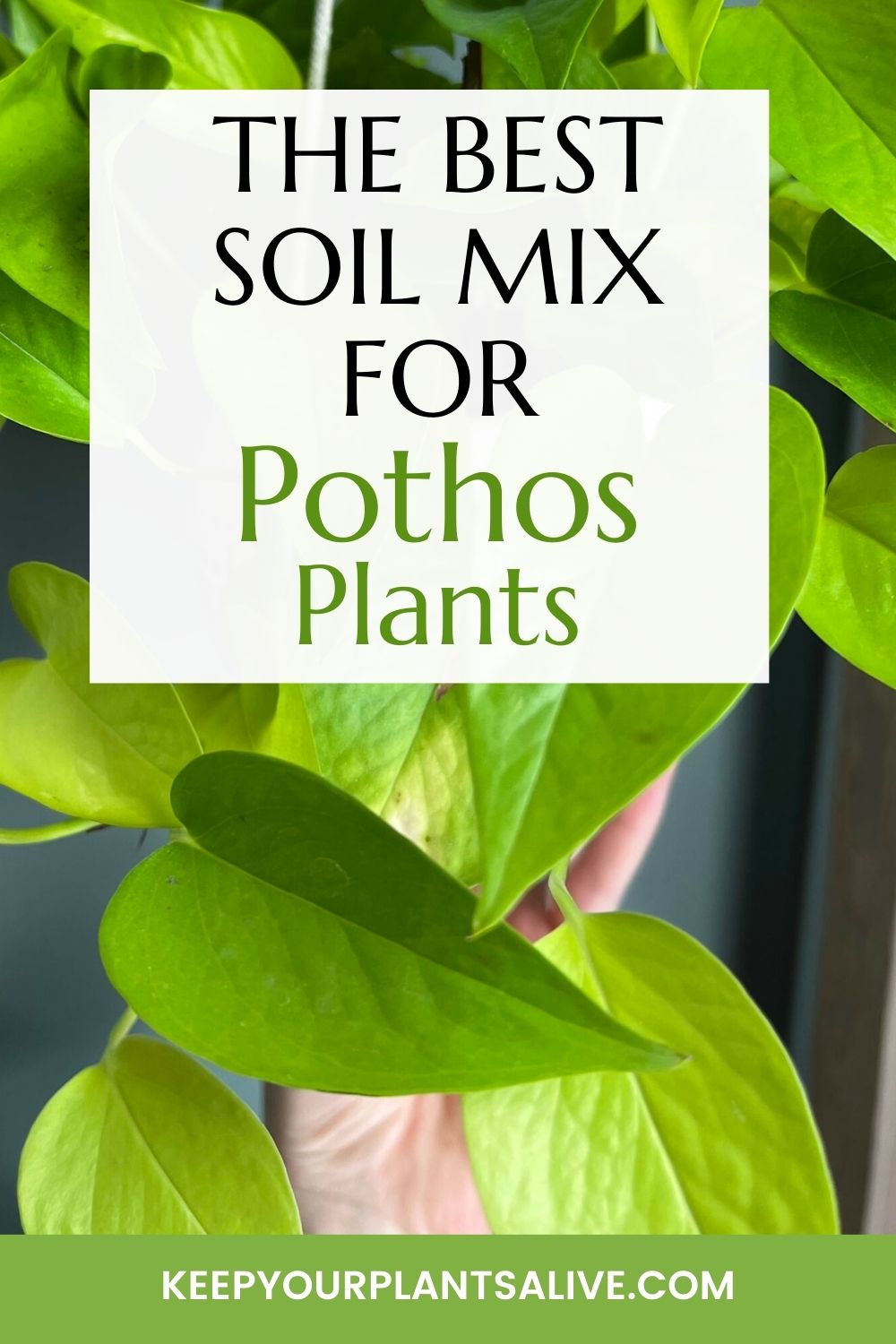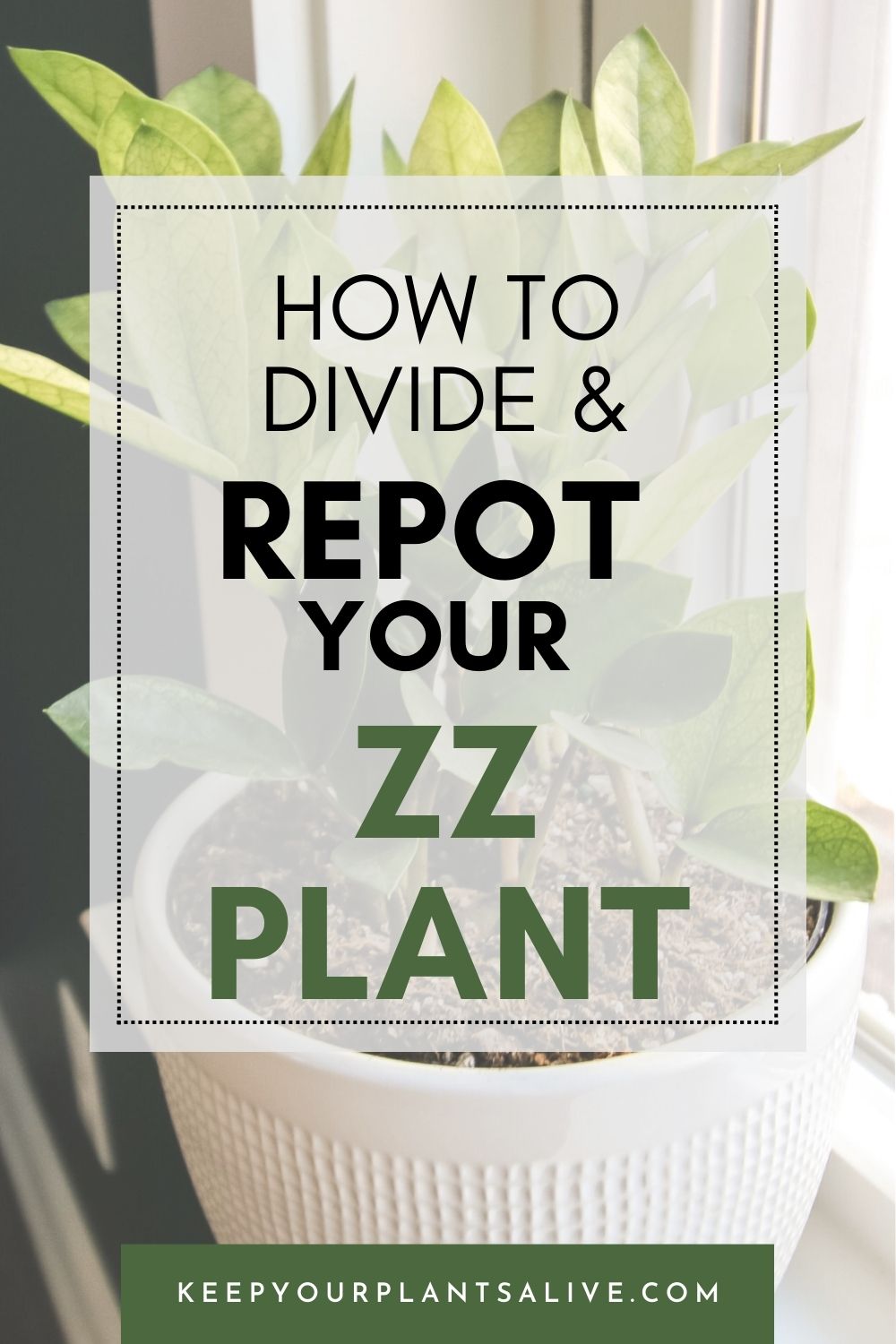Has your pothos cutting grown roots? Time to plant it! Here's a guide on how to move pothos from water to soil!
Pothos plants are one of the most popular houseplants and come in a ton of varieties that are fun to collect, care for, and propagate.
They are gorgeous, are low-maintenance, and they spruce up any place you put them! A hardy house plant such as this one can put a smile on anyone’s face.
Any enthusiast would agree that pothos is a plant that can propagate easily. Regardless, you still need to know how to properly breed and pot them.
For all those inexperienced growers who just became a part of this world, today we’re explaining how to propagate a pothos plant from scratch.
And more importantly, we’ll dive into the subject of moving pothos from water to soil.
Have you already gone through the process of rooting stem cuttings from your tropical plant? If so, you might wonder what the next step is.
It is to transfer the propagated pothos from water to soil.
This step might seem inconsequential, but it actually is when a lot of plant cuttings die, so it's important to give it some thought.
Today we’re going to uncover all you need to know to succeed. From propagation time to gentle moving until they are in the soil to aftercare. Without any further ado, let’s dig into it!
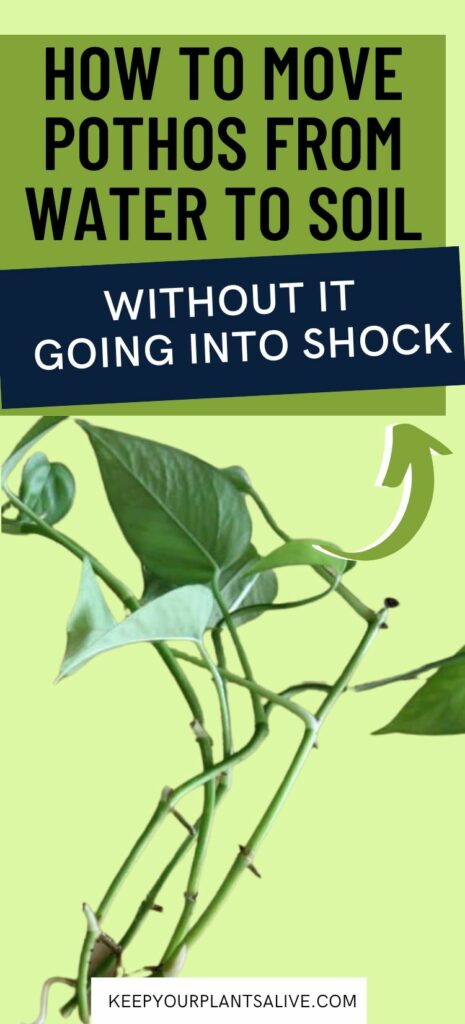
Other pothos content you might enjoy:
- Golden pothos care guide
- Cebu Blue pothos care guide
- Baltic Blue pothos care guide
- Marble Queen pothos care guide
- Global Green pothos care guide
- Neon pothos care guide
- NJoy Pothos Care Guide
- Why are my pothos leaves turning yellow?
- Why are my pothos leaves turning brown?
- Why is my pothos plant not growing leaves?
- Why are my pothos cuttings rotting
- How to move pothos from water to soil
- Should I mist my pothos?
- How to make pothos fuller
- Can you propagate pothos without a leaf?
- Can you propagate pothos from a leaf?
- Can you propagate a long pothos vine?
- Where to cut pothos for propagation
- Pothos vs Snake plants: which is better for beginners?
- Cebu Blue Pothos vs Baltic Blue Pothos
- How to propagate pothos
- How to propagate golden pothos
- How to propagate a satin pothos
- How to propagate pothos in soil
- How often to water pothos plants
- How to care for variegated pothos
- How to revive a dying pothos plant
- Why are my Pothos leaves curling?
- How to identify and treat common pothos pests
- How to divide pothos plant
- How to make pothos grow bigger leaves
- Why does my pothos only have one vine?
- Can you grow pothos in low light conditions?
- How to cut off dead pothos leaves
- Are pothos plants toxic to cats and dogs?
- Can you grow pothos in water?
- Why is my pothos droopy?
- Why is my pothos plant dropping leaves?
Printable Pothos Plant Care Guide
Join the (free!) KeepYourPlantsAlive+ community to access this exclusive printable plant care guide! Or keep scrolling for more!
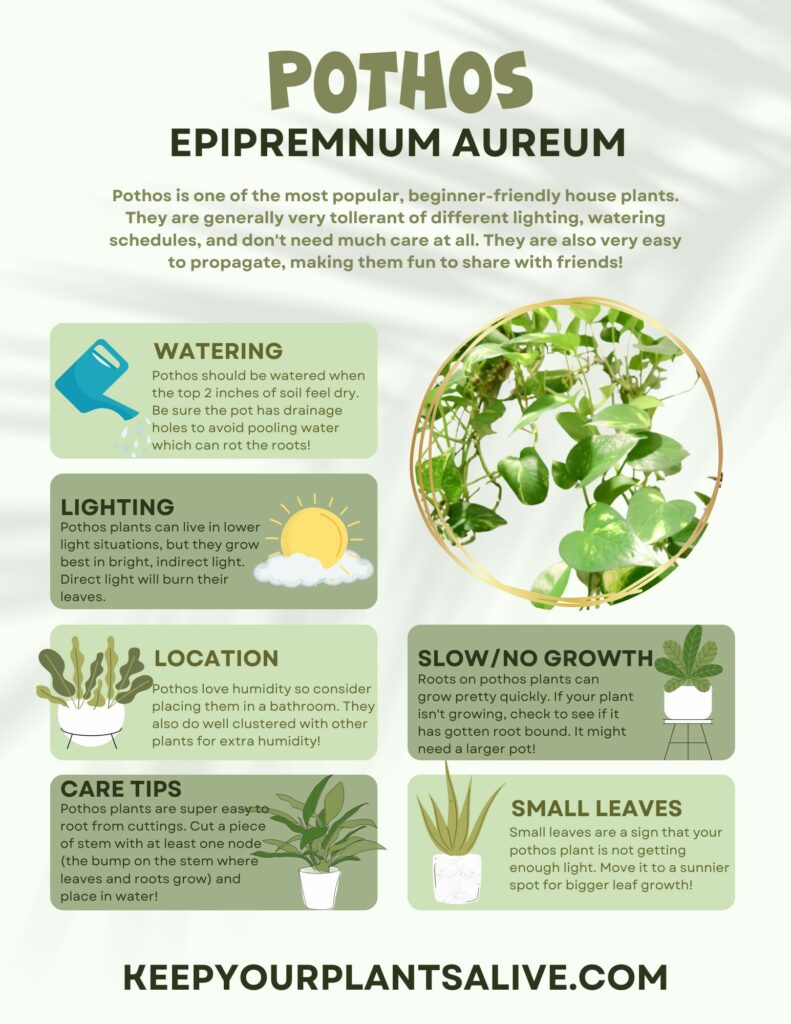
Importance of transferring from water to soil
While it is possible to grow pothos in water forever, they thrive best when planted in potting soil. It is very popular to propagate cuttings in water, but then move them to soil once they are established.
However, this transplanting can lead to your plant going into shock and even dying if not done correctly.
When can I transplant pothos from water?
You can move pothos from water to soil as soon as you notice it has developed new roots from the water propagation. I typically wait for roots to be 2 inches long before moving water-sprouted cuttings into soil.
Getting all the nutrients from the soil will strengthen your cuttings, helping them thrive into healthy and wonderful plants!
Even though there are many ways to propagate this plant, this particular method has the highest success rate.
We must admit it is a slow process, but it’s totally worth it in the end! The water cuttings have constant access to hydration directly to their stems. It helps them develop easily until they are transferred to soil.
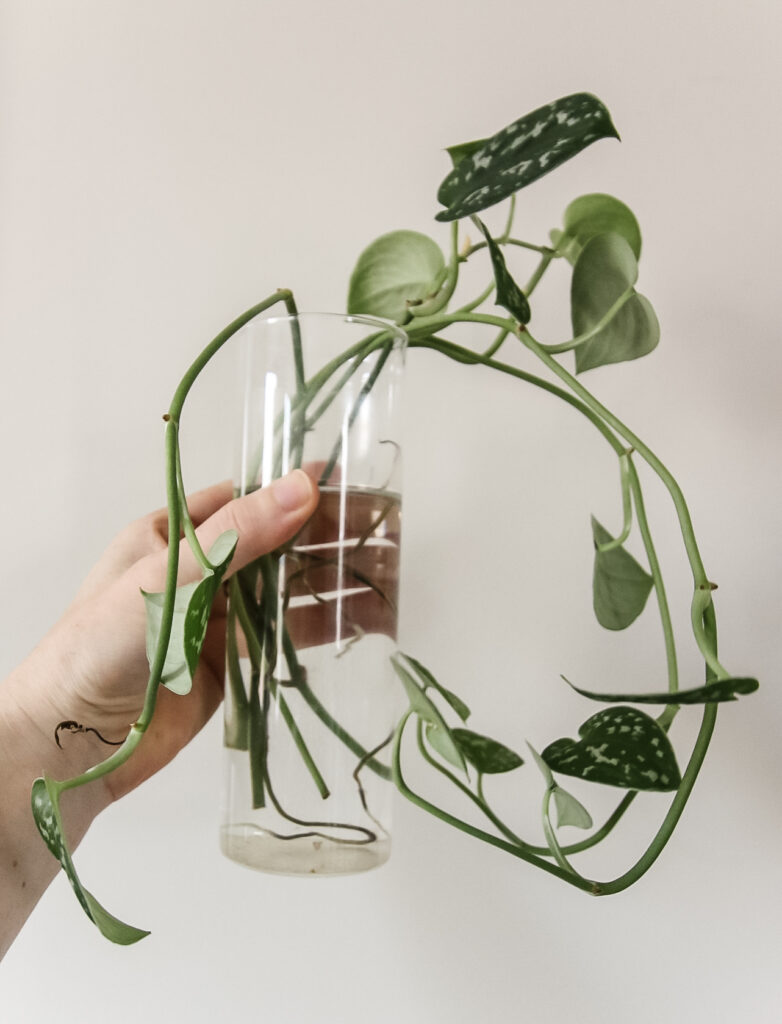
Once your pothos has developed new roots, you can transplant it from water to soil.
The first thing you need to do is prepare a nice pot that has drainage holes underneath and fresh, new soil. Gently rinse the roots and place them into the new pot.
Then, take some soil and fill the planter with it. Gently press down on the soil, give it a good watering, and find a good location for your new plant.
Remember, not too dark or bright; always be away from direct sunlight.
All of this may sound intimidating, especially to those who have put so much effort into creating the perfect cuttings and waiting a few weeks until they develop roots.
Remind yourself that the process is quick and straightforward, and you only need to be careful about the soil you choose.
Step by step guide to moving pothos from water to soil
- Prepare the pot:
- Select a pot that has drainage holes at the bottom to allow excess water to escape.
- Ensure the pot is large enough to accommodate the pothos cutting with some room for root growth.
- Clean the pot with mild soap and water to remove any dirt or residue from previous use.
- Choose the soil:
- Use a well-draining soil mix specifically formulated for houseplants or create a mix by combining equal parts of potting soil, perlite, and peat moss.
- Avoid heavy soils or those that retain too much moisture, as they can lead to waterlogged conditions and root rot.
- Prepare the cutting:
- Gently remove the pothos cutting from the water, being careful not to damage the roots.
- Rinse the roots under running water to remove any remaining debris or excess rooting hormone.
- Inspect the roots for any signs of damage or decay. Trim away any brown or rotten roots using clean scissors or pruners.
- Planting the cutting:
- Place a layer of soil in the prepared pot, filling it about one-third full.
- Create a small hole in the center of the soil using your finger or a dibber.
- Insert the pothos cutting into the hole, ensuring that the roots are spread out and well-covered with soil.
- Gently press the soil around the cutting to provide stability but avoid compacting it too tightly.
- Watering and aftercare:
- After planting, give the cutting a thorough watering to settle the soil and provide initial hydration.
- Ensure that excess water flows out through the drainage holes and remove any standing water from the saucer.
- Place the pot in a location with bright, indirect light. Avoid direct sunlight, as it can scorch the leaves.
- Maintain consistent soil moisture by checking the top inch of soil regularly. Water the plant when the soil feels dry to the touch.
- Avoid overwatering, as it can lead to root rot. Allow the soil to dry out slightly between watering sessions.
- Monitor the plant for any signs of pests or diseases. Treat any issues promptly to prevent further damage.
- Provide support (optional):
- If the cutting is tall or unstable, you can provide support by inserting a stake or small trellis into the soil near the cutting.
- Gently tie the stem to the support using soft plant ties or twine, ensuring not to constrict or damage the stem.
- Continued care:
- Regularly prune your pothos to encourage bushier growth and maintain its shape.
- Fertilize the plant every 4-6 weeks during the growing season using a balanced houseplant fertilizer.
- Rotate the pot occasionally to ensure even growth on all sides.
- Keep an eye out for signs of stress, such as yellowing leaves or stunted growth, and take appropriate action if needed.

Why is my pothos in shock after replanting?
Think about it this way – as a person, any situation that might take you away from your comfort zone can make you feel uneasy, even stressed at times. The same thing happens to plants.
When you move pothos from water to soil, the change of environment is big, which means that the plant is bound to experience distress.
For that reason, you need to do the transfer correctly to minimize the damage.
If you notice that your plant starts to curl up, wilt, or wither away after a while, you need to be prepared for immediate action.
Treating them properly can make all the difference at this point, which is why you need to know how to reduce the shock and get the plant back to normal.
There are a few reasons why your pothos plant is still in shock after replanting:
- You don’t provide it with enough water – the cutting has been in the water for a few weeks, and now it only gets water only once in a while. That is quite a shock, and if you have been doing this, try to maintain a regular watering schedule. When you move pothos from water to soil, try to check the soil moisture level regularly.
- There has been some root damage – while transporting the plant, you might have nicked the root or damaged it while rinsing it. This is considered difficult to diagnose and can cause the entire plant to decay. Check to see if the roots are white or not. White roots indicate health, while brown or rotten roots indicate that the move has been unsuccessful. If you have the chance, clip away all the rotten ends and try to save your plant.
- They could be infected – spider mites are the most common thing that drives pothos plants in shock. Sometimes, it can happen as soon as a week after you have potted a new plant. Pay close attention to your plant and check it daily after putting it in fresh soil. It is the only way you can prevent any long-term damage and stress from happening.
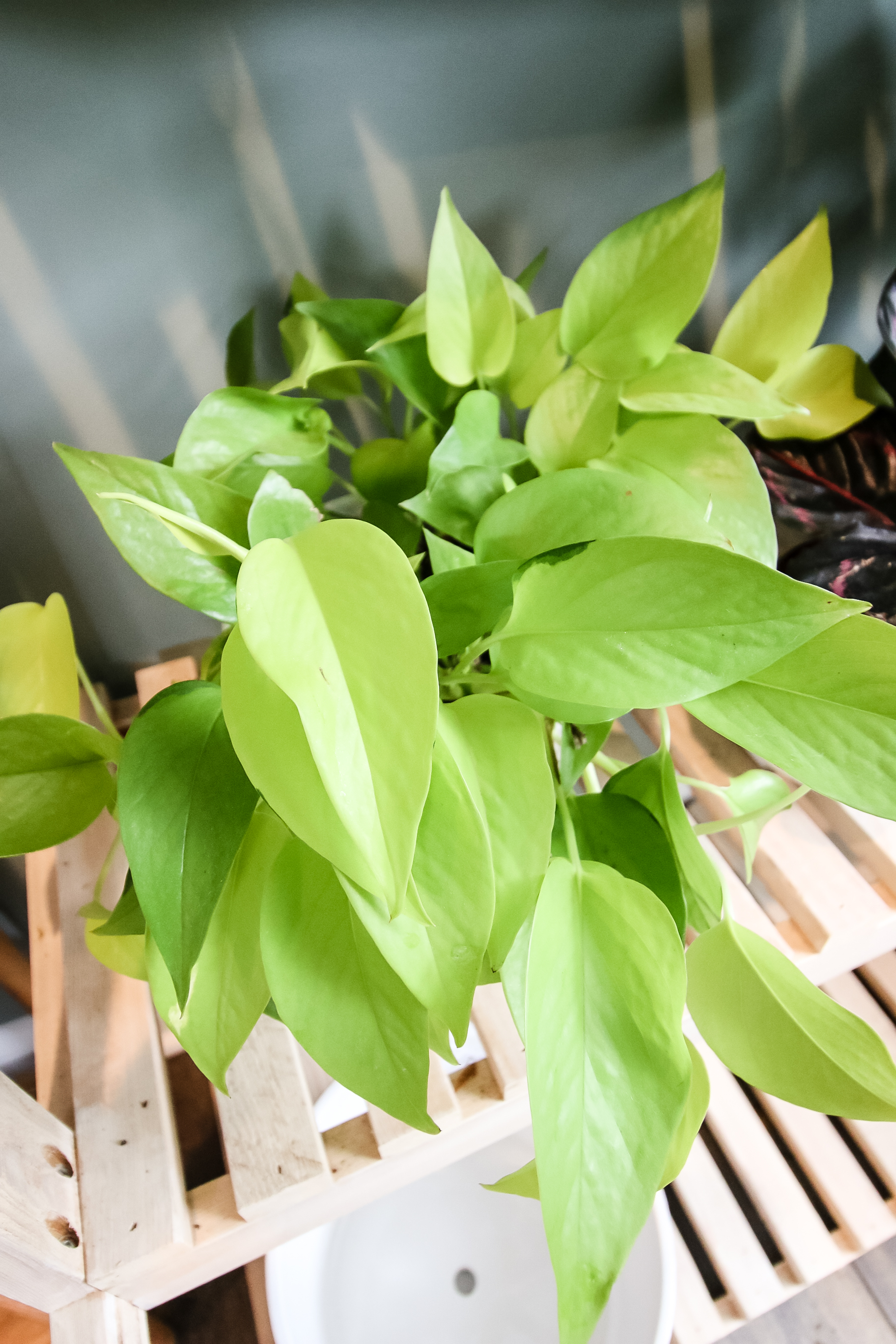
Common mistakes when moving pothos cuttings to soil
Here are some common mistakes to avoid when transplanting pothos cuttings:
Insufficient water
One common mistake people make when transferring pothos from water to soil is not providing enough water initially. After being rooted in water for a few weeks, the plant is accustomed to a constant water supply.
However, once it is transferred to soil, the watering schedule changes. It's important to maintain a regular watering schedule to prevent the plant from experiencing shock.
Monitor the moisture level of the soil regularly and water the plant when the top inch of soil feels dry.
Root damage
During the process of transferring the plant from water to soil, there is a risk of damaging the delicate roots. This can happen when handling the plant or rinsing the roots.
If the roots are nicked or damaged, it can lead to decay and hinder the plant's ability to establish itself in the soil.
Inspect the roots carefully before planting and look for any signs of damage. If you notice brown or rotten roots, it's important to trim away those parts to prevent further decay and give the plant a chance to recover.
Pests and infections
Pothos plants can be susceptible to pests, particularly spider mites. These tiny pests can infest the plant soon after it is potted in fresh soil, causing stress and damage.
It's crucial to closely monitor the plant for any signs of infestation, such as webbing or tiny insects. If you notice any pests, take immediate action to treat the plant.
You can try using insecticidal soap or neem oil to control the infestation. Regularly inspect the plant and take preventive measures to keep pests at bay, such as maintaining good airflow around the plant and avoiding overcrowding with other plants.
Inappropriate lighting
Another common mistake is placing the pothos plant in the wrong lighting conditions after transplanting. Pothos plants prefer bright, indirect light but can suffer if exposed to direct sunlight.
Ensure that you place the plant in a location where it receives adequate light but is protected from harsh, direct sunlight. Too much sunlight can lead to leaf scorching and stress the plant.
On the other hand, insufficient light can result in leggy growth and reduced vitality. Observe the plant and adjust its location accordingly to provide the optimal lighting conditions.
Improper soil and drainage
Using the wrong type of soil or inadequate drainage can also lead to problems after transferring pothos from water to soil.
Pothos plants thrive in well-draining soil that allows excess water to escape. Using a soil mix specifically formulated for houseplants or adding perlite or sand to improve drainage can help prevent waterlogged soil and root rot.
Additionally, ensure that the pot has drainage holes to allow excess water to escape. Improper soil and drainage can lead to waterlogged conditions, suffocating the roots and causing the plant to decline.
To troubleshoot these issues, it's important to closely monitor the plant's condition after the transfer and take appropriate actions.
Adjust the watering schedule if needed, trim damaged roots, treat pests promptly, ensure proper lighting, and make necessary adjustments to the soil and drainage.
By being attentive and addressing any problems that arise, you can help the pothos plant overcome the shock of replanting and thrive in its new soil environment.
Moving photos from water to soil is an easy thing to do – even though the aftercare takes a lot of time and dedication. However, if you know how to do the transfer properly, you should have no problem helping the plant thrive.
If you liked this blog and want to read more on the subject, download our free PDF Pothos plant care guide!

Before you go...
Now that you have your pothos growing, time to get the lighting right! Check out our complete guide on growing pothos in low light conditions to see if your spot will have enough light for your plant!
Thanks for reading!


Hey there, I'm Morgan, a houseplant enthusiast from sunny Charleston, South Carolina. Growing up surrounded by my mom's lush orchids and African violets, I discovered the magic of bringing nature indoors. Thanks to the pandemic, I delved deeper into houseplants, discovering their power to uplift moods and transform spaces. I'm here to spill all my secrets, helping you pick the perfect houseplant - and make it happy. Let's keep your plants alive, together! 😊



